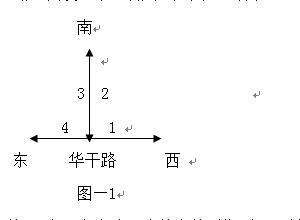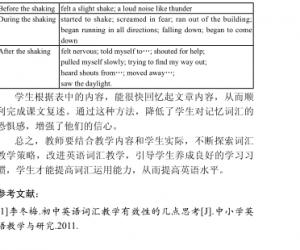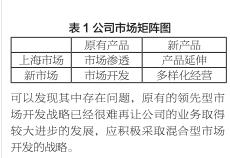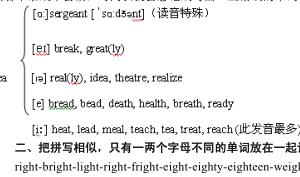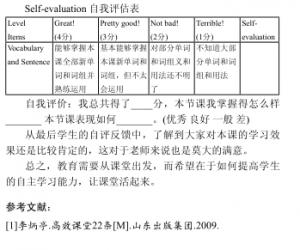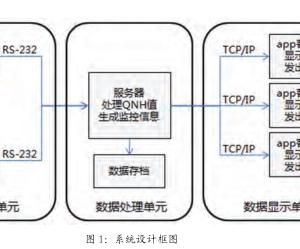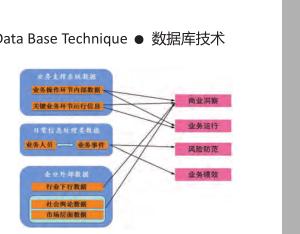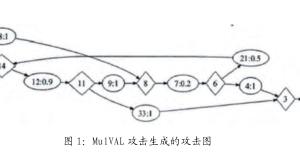Cooperative Learning in China's College English Teaching
热度0票 浏览776次
时间:2013年10月29日 10:15
Cooperative Learning in China's College English Teaching
傅 怡
(武汉工程大学,湖北 武汉 430205)
摘 要:With the elaboration on the theoretical bases and significance of the cooperative learning and the practical situation of college English teaching as well, this article probes into potentially applicable strategies in college English teaching in light of existing research.
关键词:cooperative learning;college English teaching; teaching strategies
Ⅰ.Introduction
Cooperative learning has a long history in the west and appeared for several decades. Over the past forty years hundreds of studies on cooperative learning in different subjects and areas have been conducted. Recently, many scholars have claimed that cooperative learning is rather beneficial to second or foreign language teaching since “it provides maximum opportunities for meaningful classroom interaction in a supportive environment, thereby improving learners’ achievement, motivation to learn, and overall psychosocial adjustment” (Shaaban, 2006, p. 378). College English teaching and learning in China has rapidly progressed in the past few decades under the prosperous development of various language teaching theories and the urgent reform and curriculum requirements for English education. Cooperative learning focusing on the student-centered mode is a beneficial attempt to reform the traditional teaching model. However, we may find the fact that the present research on cooperative learning at home targets more on the theory than teaching practice. Although cooperative learning begins to be implemented in China' English teaching, its teaching effects seem far from being satisfactory. In this article, I will first present the theoretical bases of cooperative learning and its significance in language teaching, and then address its potential problems in China's college English teaching, and lastly explore some constructive ways to better apply cooperative learning strategies to the teaching practice.
Ⅱ.Cooperative learning and its theoretic perspectives
Cooperative learning as an instructional approach is “a group learning activity organized so that learning is dependent on the socially structured exchange of information between learners in groups and in which each learner is held accountable for his or her own learning and is motivated to increase the learning of others” (Kagan, 1995, p. 8). Kagan continued to emphasize the five principles of facilitating group work: positive interdependence, individual accountability, equal participation and simultaneous interaction and group progressing. We can find several theoretic bases of cooperative learning in different learning areas and fields, such as Vygotsky’s constructivism theory deeming that learning is a cooperative process, Piaget’s cognitive developmental theory contending that one’s personal understanding of the world might need the creation of cooperative learning environment and Rogers’ humanism theory emphasizing the importance of safe environment without any psychological threats in the learning process. Meanwhile, some theories of second language acquisition such as Kranshen’s input theory, Long’s interactive theory and Swain’s comprehensible output theory provided the solid theoretic basis on the application of cooperative learning in language classrooms.
Ⅲ.The significance of cooperative learning in second language acquisition
Large amount of research indicated that cooperative learning in the second language classroom can provide more opportunities to use language in meaningful and real-life situations, thus facilitating their second language acquisition. More empirical studies have been done in the last decade to further investigate the profound effects of cooperative learning on second language acquisition. Mogan (2010) and his colleagues examined three classes of undergraduate Hispanic students experiencing cooperative learning in the EFL classroom over a full semester with pre-semester and post-semester surveys to conclude that cooperative learning encouraged and improved the performance of all students. Suwantaratbip and Wichadee (2010) experimented with 40 sophomore students in Bangkok University finding that the use of cooperative leaming as part of the language learning method reduced the students' anxiety and improved language proficiency. Shaaban's (2006) findings with Forty-four grade five English learners suggested the less effects of Jigsaw II on the growth of vocabulary and reading comprehension but its stimulation of students' motivation to read. Other studies concerning the significance of implementation of cooperative learning were also conducted suggesting its feasibility in large classes.
Ⅳ. Problems of cooperative learning in China's college English teaching.
In the aforementioned ways, cooperative learning has profound effects on second language learning and teaching. We are relieved to perceive that many researchers and tutors in China have begun to implement the cooperative learning strategies in the classroom. However, the teaching effects of college English are still far from being satisfactory largely due to the inappropriate implementation of cooperative learning.
1."Cultural expectations of appropriate roles of teachers and learners" (Crandall, 1999, p. 140). Although the teaching reform in China made significant achievements to transfer the teaching model from being teacher-centered to student-centered, the authority and influence of teachers is hardly challenged and students are accustomed to teacher-centered classroom. Furthermore, students regard teachers as more experienced and intelligent authorities while ignoring peers' suggestions and comments on their group work. Thus group interaction can appear to be chaos unless students are clearly aware of this burgeoning learning and teaching structures.
2.Inappropriate understandings of concept cooperative learning. Cooperative learning is not only an effective teaching model, but also a rather creative and novel teaching theory and strategic system with plentiful educational notions. However, most Chinese teachers have a rather vague understanding of the key components of cooperative learning such as positive interdependence, individual accountability, face-to-face group interaction, interpersonal skills and group progressing. They simplify the cooperative learning as students' autonomous study with group members and seldom engaging themselves in the students' topic discussion, giving up their effective instructional role as a supervisor in class. In addition, teachers often neglect the goal and evaluation of cooperative learning. When finishing the activities, they can not provide instant and valuable feedback on the students' performance, which will definitely reduce students' interest and initiatives.
3.Poor language proficiency and over-reliance on the first language. While most student recognize the positive influence of cooperative learning on their learning process, they are unsatisfied with their poor linguistic knowledge and oral performance, which might have a negative effect on their overall development of language acquisition. Furthermore, they tend to lose more opportunities to use language in a real-life context due to the lack of confidence. Another related issue is the overuse of the first language in the class. Although some studies showed that use of the first language in some cooperative activities may positively facilitate second language learning, students cannot really develop their language proficiency, especially the oral and written abilities with the over-reliance on the first language in most time.
4.Backward teaching management. As a new teaching model, cooperative learning requires the support of teaching policies and systems. However, the uniform teaching planning and syllabus confine teachers to regular teaching pattern unless a more flexible and contributive system is built to facilitate the implementation of cooperative learning.
Ⅴ. Strategies for implementing cooperative learning
The literature on cooperative learning suggests that when implementing cooperative learning, several issues need to be carefully considered to maximize its positive teaching and learning effects.
Firstly, teachers need access to the essence of cooperative learning including its theoretical bases and characteristics to fully comprehend and effectively employ diverse strategies of cooperative learning. When initiating cooperative learning, teachers are supposed to recognize the role as a facilitator that can skilfully utilize teaching methods and help learners explicitly and patiently be familiar with this new pedagogical approach in an educational context. Meanwhile, a proper balance between student-student cooperative learning and teacher-student individualized learning need to be established with regular time. Given a situation of more than 60 students in class, it is questionable whether they are able to accomplish the task successfully with group members all the time without teachers' scaffolding.
Secondly, teachers should "engage in fostering a safe and non-threatening learning atmosphere to alleviate language anxiety and encourage risk taking in using English" (Ning, 2011, p.61). When implementing the cooperative activities, they need to assign learners with more specific, well-planned and meaningful tasks within sufficient time that must be genuinely interesting and closely related to real life so that students are willing and enthusiastic to participate with highly motivation. When grouping students, teachers should consider their different interests, hobbies, personalities as well as English level proficiency. The use of heterogeneous groups according to academic proficiency (to promote peer tutoring) is well-accepted. Less proficient students need more attention from teachers' instruction than their peer feedback. After group activities, the teachers should give a proper assessment, giving more praise and encouragement. In addition, it is essential for teachers to make investigation, collect feedback information, and reflect on qualities and defects from all aspects to sensibly summarize cooperative learning after class.
Thirdly, administrative support from relevant policies and departments is crucial significant to help establish a culture of cooperation throughout the school. Cooperation does not only belong to students, teachers themselves still need to cooperate with each other. "Teacher-teacher collaboration offers psychological support, the possibilities of action research, new ideas, greater power, enhanced motivation and a reduced workload"(Jacobs, 2006, p. 43). Thus When designing a task, teachers should be aware of China's specific cultural context and make joint efforts to implement some adaptative cooperative learning methods for ELT with tertiary learners so as to conduct these strategies more effectively.
Ⅵ.Conclusion
The extensive literature on cooperative learning indicates its significance and practicality in second language teaching. With the deepening reform of China's college English, student-centered instruction becomes the mainstream of teaching model and cooperative learning method has begun to catch numerous Chinese instructors’ attention. However, the majority of them failed to understand the essence of cooperative learning when utilizing these so-called strategies. Actually, it is a long way to go to conduct further empirical research, testing and evaluating the feasibility as well as validity of cooperative learning in China's language teaching. When the success is coming, the teaching effects will be doubled and the teaching goals will be achieved.
参考文献:
[1]Crandall, J. Cooperative language learning and affective factors. In J. Arnold (Ed.), Affect in language learning[M]. Cambridge: Cambridge University Press,1999:226-245.
[2]Jacobs, G. M. Issues in implementing cooperative learning. in S. G. McCafferty, G. M. Jacobs, & A. C. D. Iddings (eds.), Cooperative learning and second language acquisition[M]. Cambridge: Cambridge University Press. 2006: 30-46
[3]Kagan, S. We can talk: Cooperative learning in the elementary ESL classroom. [J].Elementary Education Newsletter,1995,17(2), 132-158.
[4]Morgan,B.M.Rosenberg, G. P.& Wells,L.Undergraduate Hispanic student response to cooperative learning[J].College Teaching Methods & Styles Journal, 2010,6(1), 7-12
[5]Ning, H. Adapting cooperative learning in tertiary[J].ELT. ELT Journal,2011, 65(1), 60-70.
[6]Shaaban, K. An initial study of the effects of cooperative learning on reading comprehension, vocabulary acquisition, and motivation to read. Reading Psychology, 2006,27(5), 377-403.
[7]Suwantaratbip,O. & Wichadee, S. The impacts of cooperative leaming on anxiety and proficiency in an EFL class[J]. Journal of College Teaching & Learning, 2010,7(11), 51-57.





